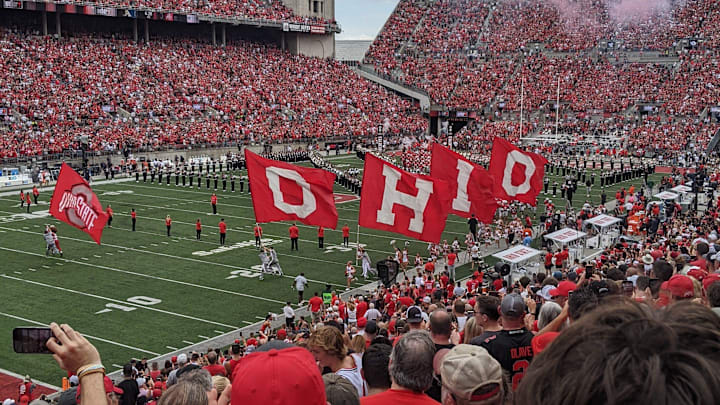Ohio Universities Could Take Control of Athlete NIL Deals

Ohio lawmakers have introduced House Bill 660, which empowers universities to engage directly in negotiations for Name, Image, and Likeness (NIL) agreements with student-athletes.
Spearheaded by Republican representatives Adam Mathews and Jay Edwards, this bill seeks to clarify the legal framework surrounding NIL deals in Ohio while enhancing the recruitment capabilities of its universities.
Under the proposed legislation, universities would be authorized to directly compensate players for the use of their NIL, or provide financial support to independent NIL collectives, nonprofits that raise funds for student-athletes.
However, the bill also imposes certain restrictions, prohibiting NIL agreements related to tobacco, marijuana, alcohol, vaping products, adult entertainment, and gambling. Furthermore, athletes would be barred from using their school’s facilities, uniforms, or equipment in advertisements, nor would they be allowed to promote products during official team activities.
A pivotal aspect of HB660 is its prohibition on restrictions that would prevent student-athletes from receiving compensation for their NIL, or from hiring agents to negotiate such agreements.
The NCAA's ban was lifted following a landmark 2021 U.S. Supreme Court ruling that permitted education-related benefits, prompting states like Ohio to enact laws that facilitate NIL agreements. Additionally, Governor Mike DeWine's executive order in 2021 further ensured that Ohio schools could remain competitive in recruiting by allowing athletes to profit from their NIL early on.
While the bill holds great potential to empower student-athletes, concerns have been raised regarding the implications of allowing universities to control NIL negotiations.
Critics argue this could create a power imbalance, where universities may exert undue power and influence over athletes' financial opportunities. As highlighted in discussions surrounding the bill, “the need to clarify the legal status of NIL agreements in Ohio is crucial to protect student-athletes,” yet it is vital to ensure that this protection does not come at the expense of their autonomy.
Ohio's major universities, including Ohio State University, the University of Cincinnati, and Ohio University, have already established NIL foundations, indicating that the financial landscape for athletes is evolving rapidly.
Reports suggest Ohio State football players earned approximately $20 million in NIL compensation last year, underscoring the lucrative potential of these agreements.
With limited legislative sessions remaining after the November elections, the future of HB660 remains uncertain.
Bills introduced late in the session often encounter hurdles in passing unless they are reintroduced.
As the dialogue surrounding NIL continues to evolve, especially with the ongoing House vs. NCAA settlement, it is imperative for lawmakers to strike a balance that protects student-athletes while fostering a fair and competitive environment in college sports.
